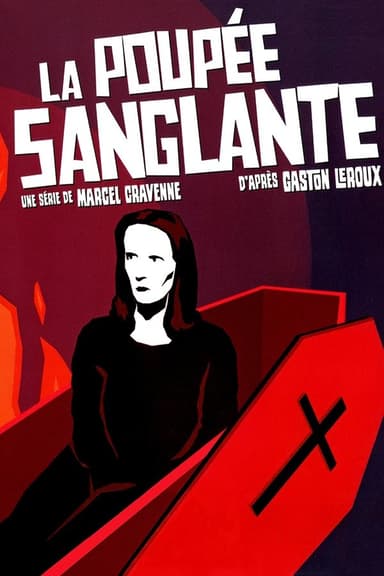
L'Homme qui revient de loin
1972 •
The story of a rich and arrogant owner of a French château who disappears suddenly, leaving the direction of his company to his younger brother and his ambitious wife Fanny. But soon, the ghost of the missing brother arrives to disrupt the couple’s dream life.
Why you should read the novel
Before streaming another episode of L'Homme qui revient de loin, discover the original source: Gaston Leroux’s The Man Who Came Back from the Dead. As the creator of The Phantom of the Opera, Leroux delivers a gripping blend of mystery, gothic atmosphere, and psychological intrigue that television can only hint at. Reading the novel unlocks the author’s meticulous clues, misdirections, and narrative craft in their purest form.
The book’s slow-burn tension and spiritualist themes are richer on the page, where Leroux layers testimony, deduction, and unsettling detail into a chilling puzzle. If you love classic French mysteries, the novel offers a deeper immersion into period mores, occult fascinations, and the moral ambiguity of those who manipulate belief. It’s a definitive experience for fans of elegant, cerebral suspense.
Choosing the book over the series lets you inhabit the characters’ minds and track the investigation at your own pace. You’ll savor Leroux’s sharp prose, subtle foreshadowing, and carefully engineered reveals—elements often compressed on screen. Start with The Man Who Came Back from the Dead and enjoy the story the way Leroux intended: as a masterclass in atmosphere, deduction, and dread.
Adaptation differences
The 1972 adaptation streamlines Leroux’s intricate plotting to fit episodic television. Expect condensed timelines, merged side characters, and simplified investigative steps. On the page, the mystery unfolds with more methodical clue placement, red herrings, and interior reasoning that reward attentive readers.
Where the novel maintains a careful ambiguity around spiritualism and the uncanny, the series leans on visual cues—seances, apparitions, and mood lighting—to externalize fear. Leroux’s text favors psychological uncertainty and rational explanations revealed late; the show heightens supernatural overtones to sustain weekly suspense.
Characterization also shifts. The book grants fuller interiority to key players—their motives, guilt, and moral compromises—while the adaptation sharpens conflicts and relationships to drive onscreen drama. Subplots that deepen themes of identity, inheritance, and deception are trimmed or reassigned to keep momentum.
Finally, tone and resolution differ. Leroux builds to a carefully argued unmasking that emphasizes logic and consequence, whereas the series prioritizes narrative closure and visual payoff. Readers will find the novel’s ending more forensic and thematically resonant, with explanations that clarify earlier ambiguities the adaptation treats more impressionistically.
L'Homme qui revient de loin inspired from
The Man Who Came Back from the Dead
by Gaston Leroux









